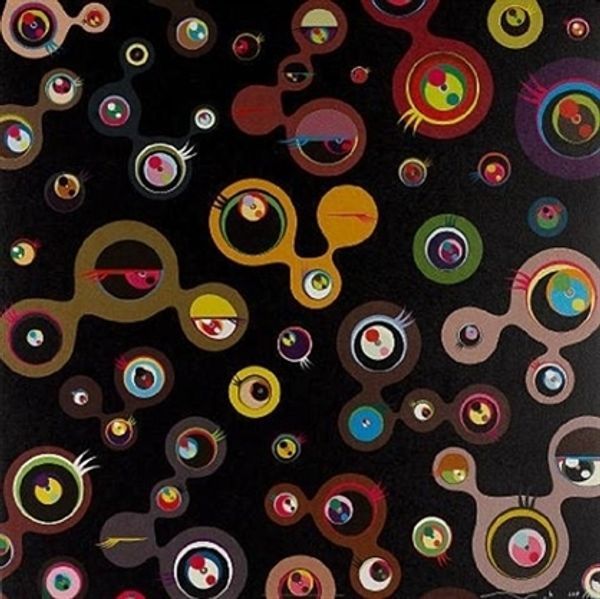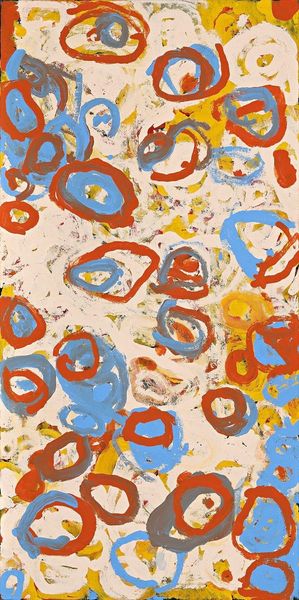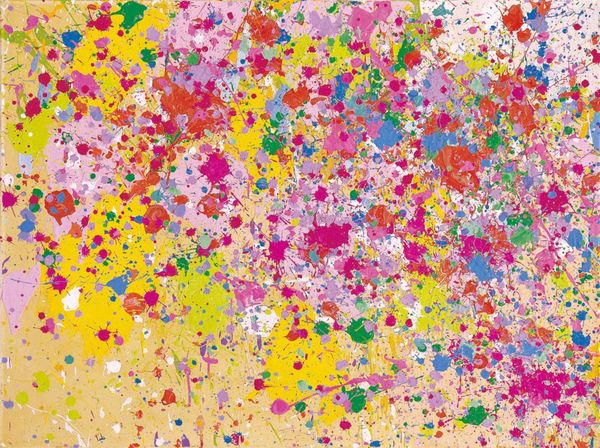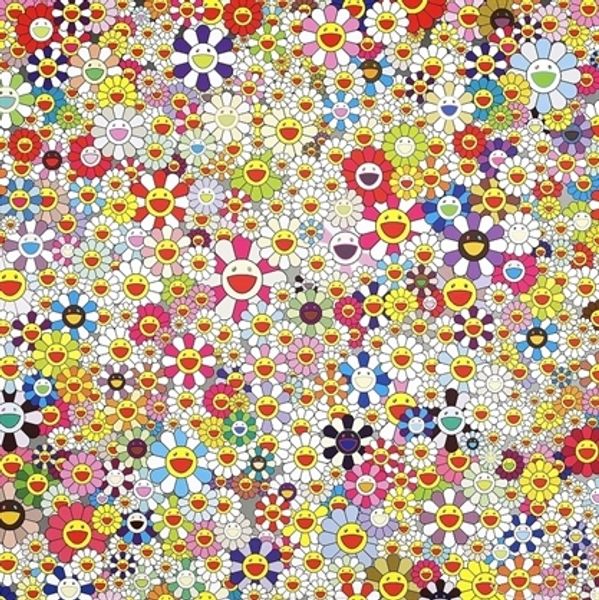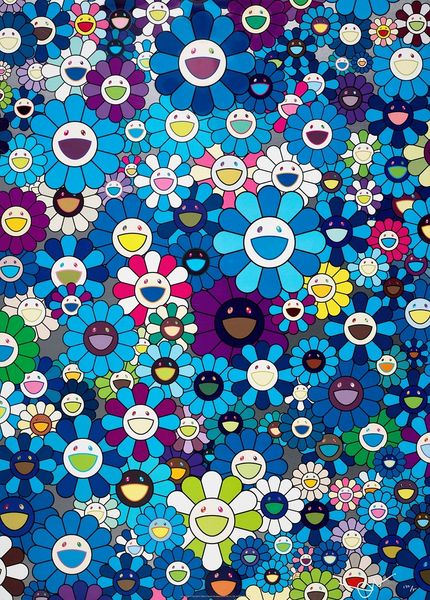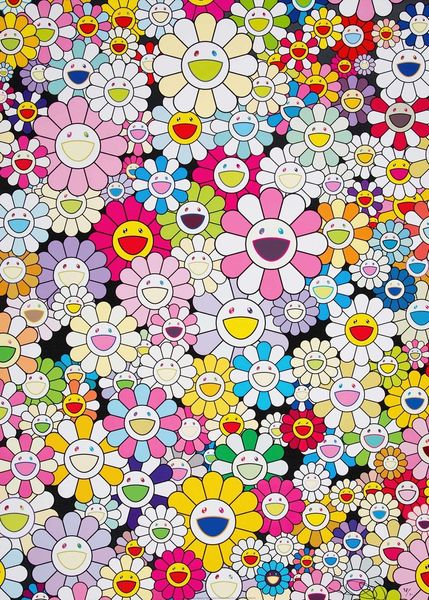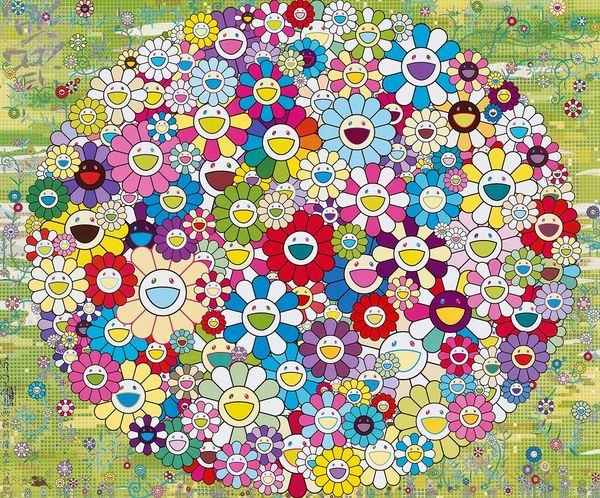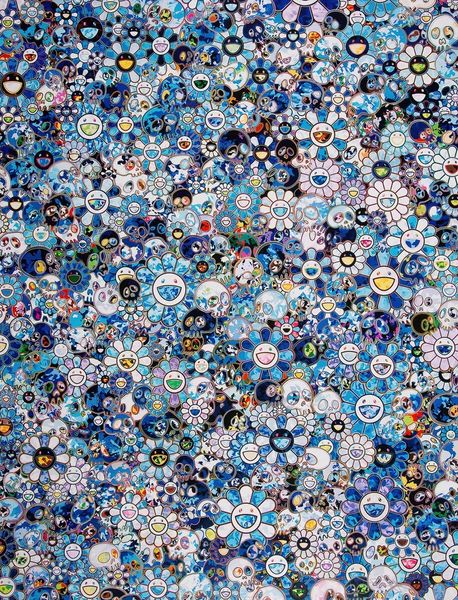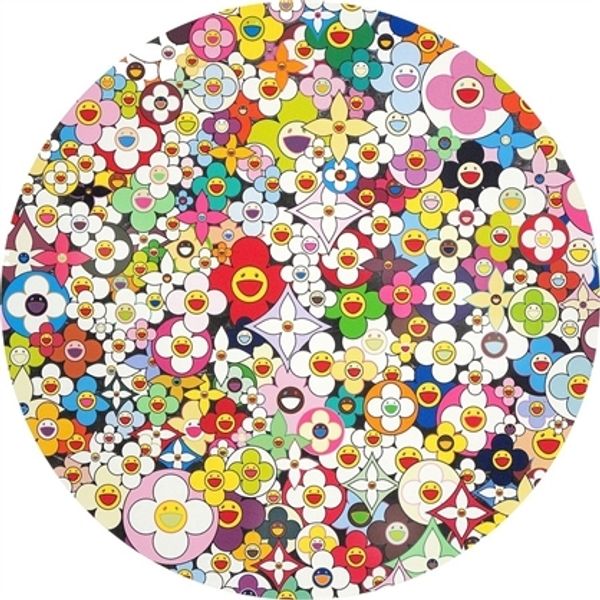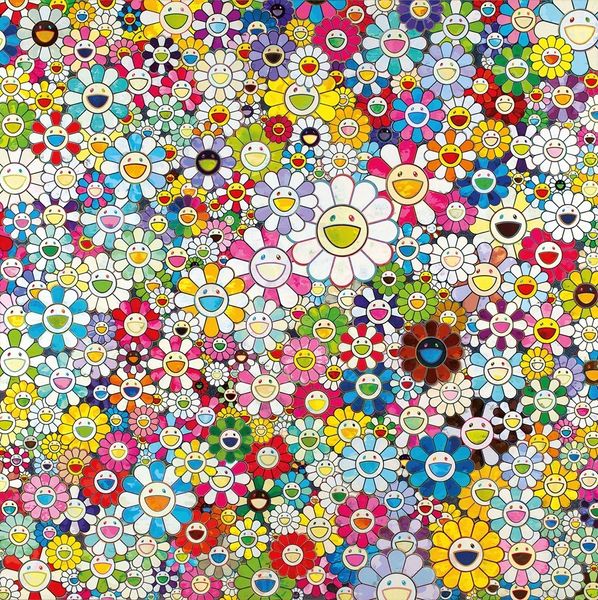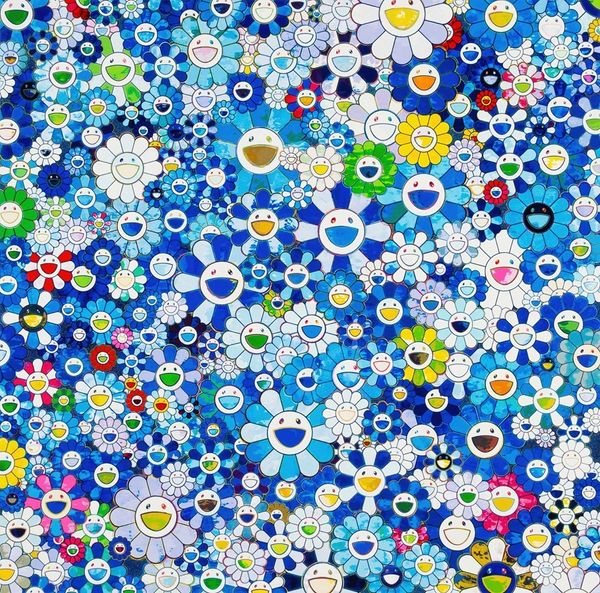
#
neo-pop
Copyright: Modern Artists: Artvee
Editor: This is Takashi Murakami's "Jellyfish Eyes - White 1" from 2004, done in acrylic paint. The first thing I notice is the sheer density of shapes, this overwhelming field of eyes. How should we interpret this composition? Curator: Note how the overall impact relies upon repetition and variation. Observe how each ‘eye’ functions as a unit, a module if you will, and through chromatic and proportional adjustments, the artist constructs a field that oscillates between order and chaos. Consider the interplay between the individual components and the gestalt. Editor: That’s interesting. So, you’re seeing it more in terms of its structure and less as, say, a commentary on surveillance or something like that? Curator: Precisely. We can discuss context later, but, formally speaking, the artist manipulates the semiotic potential of the ‘eye’—its inherent symbolic baggage—through changes to the signifier itself: color, size, placement. To what effect, though? Are we looking at dynamic play, a harmonic field? Or are there more significant tensions at work here? Editor: I guess the variations in color and size keep it from being totally monotonous. It's almost playful. I see that the eyes aren’t consistently spaced, which creates some visual rhythm across the white canvas. Curator: Indeed. Notice how this patterned ground establishes internal relationships and echoes across the surface through the careful adjustments of chromatic intensity, proportional variation, and perspectival play. Editor: I now recognize I was quick to read "eyes," rather than appreciating how the image creates rhythm and variation within defined boundaries of pattern. Curator: Analyzing this painting as a system has opened my own eyes to the tensions created by small but numerous adjustments within the artist’s visual vocabulary.
Comments
No comments
Be the first to comment and join the conversation on the ultimate creative platform.
